Breast Lift 092022
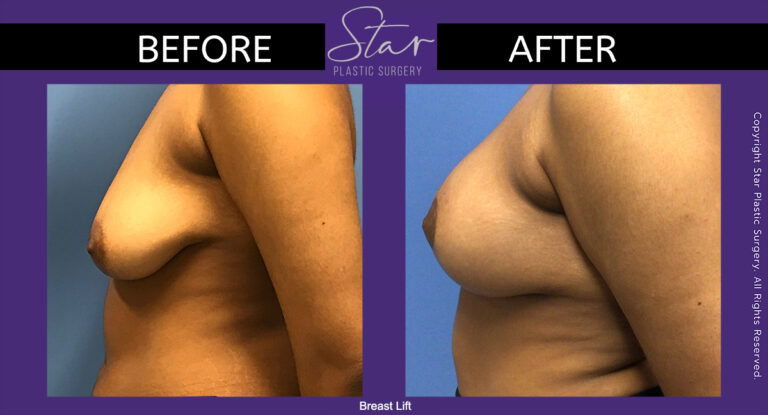
Can a Breast Lift Help You Exercise?
If you have significant sagging in your breasts, you may find that even an industrial strength sports bra doesn’t provide the support you need. This can make exercise uncomfortable, irritating, and even embarrassing. It could even lead to blisters, chafing, and pain.
So can a breast lift help you exercise?
Well, it’s not going to drive you to the Pilates studio or enable you to bench press twice your weight. OBVIOUSLY. But it sure can make movement a much more enjoyable experience! So in that regard, yes it will help you exercise.
What Breast Lift Surgery Entails
Whether you’re experiencing sagging as a result of pregnancy and breastfeeding, fluctuations in weight, genetics, or aging, a breast lift uplifts and improves the shape of the breast.
During a breast lift procedure (also known as mastopexy), your board-certified plastic surgeon removes excess skin and fat and raises the breast tissue. Separating the tissue from the skin beneath it allows for more comfort and mobility.
The chosen incision for the procedure depends on a number of factors. Depending on these, your surgeon may choose a circular incision around the areola, a line down the lower portion of the breast from the areola to the crease under the breast, or a line along that crease.
The excess skin and fat are removed from the incision. The surgeon then reshapes and lifts the breast, tightens the remaining skin, and closes the incisions.
While it’s a fairly straightforward procedure, recovery can be a bit more involved than with a traditional breast augmentation. So before you jump on the treadmill or dive into the pool, you’ll want to follow the detailed instructions provided by your surgeon for recovery.
Can a Breast Lift Help You Exercise?
It’s important to understand there will be an adjustment period after a breast lift. This is completely normal. The best thing you can do is be patient during this time. You may be eager to get back to exercise, but you don’t want to push too hard and jeopardize your lift results.
Most patients can begin with short walks around the house every few hours after the procedure. This not only keeps your heart pumping, but it improves circulation and prevents potential blood clots. Once you feel ready, you can begin to increase your activity. Take it slowly. Especially in those first few weeks after surgery.
Start with some slow walks around the neighborhood or cycling on a stationary bike. Then go from there.
You’ll be advised to not push or pull anything heavy. And because you shouldn’t exert your pectoral muscles, you’ll also not be permitted to lift anything that weighs over 10 pounds. That means you’ll need to steer clear of push-ups, pull-ups, and certain yoga poses. And no weight training or intense exercise until you get the go-ahead from your surgeon.
Jump Back Into Action With a Breast Lift
Can a breast lift help you exercise? If you’re struggling with sagging breasts that make exercise cumbersome and painful, then yes, it can.
With higher and firmer breasts, you’ll not only find more ease with exercise, but you’ll feel more confident and self-assured next time you hit the gym or the yoga mat.
So contact us today and make physical fitness a priority again. You’ll feel better in every way.
36566-Breast Lift
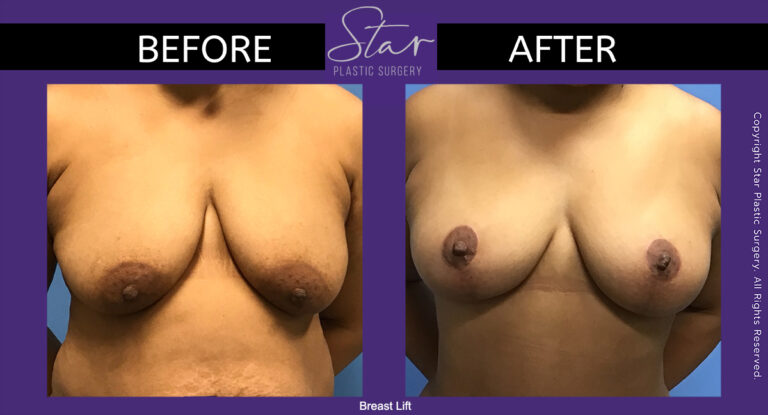
Breast Lift with removal of implants 01
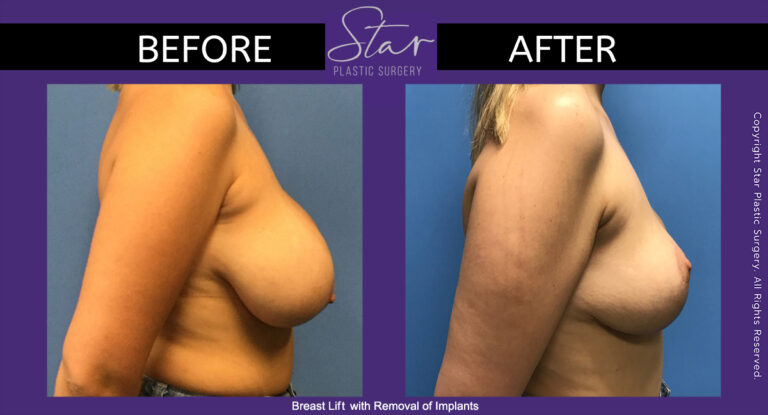
Breast Lift
9/15/2021
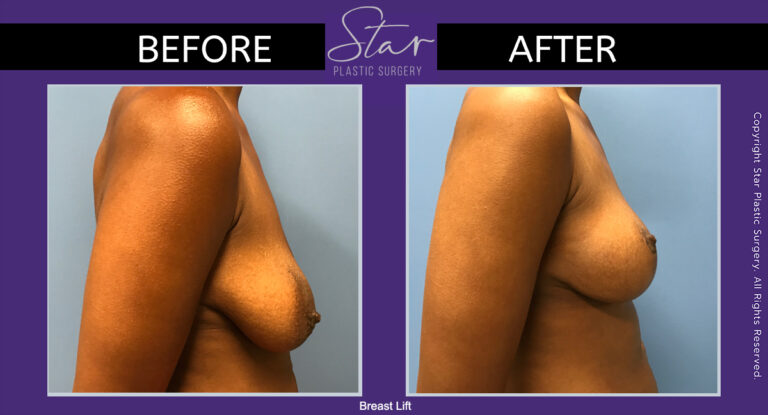
Breast Lift
9/15/2021
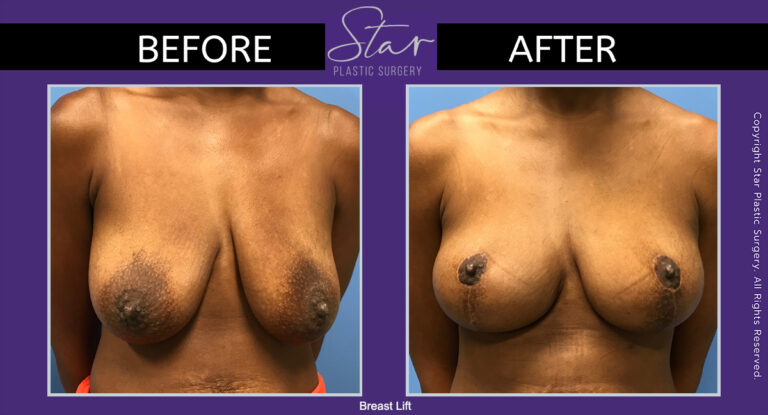
Breast Lift 34895
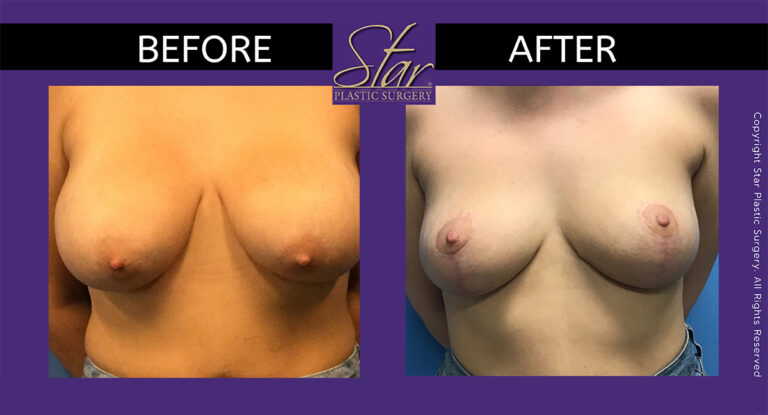
Breast Lift 34895
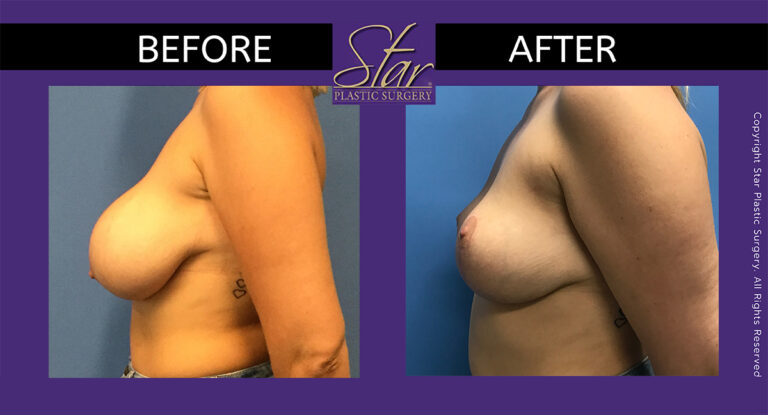
What Are the Different Types of Breast Lifts?
Do you fondly remember a time when your breasts were firmer, rounder or perkier? Or perhaps they’ve never had the fullness you desire.
If so, now is the time to consider mastopexy – a.k.a. a breast lift. In this procedure, a plastic surgeon can raise and reshape your breasts to give them the look you desire.
The surgeon can also remove extra skin around your areola, if so desired, to reduce the size of it.
Different types of breast lifts serve different purposes. The one that’s best for you will depend on the appearance of your areola and level of ptosis – the medical term for sagging.
Why Do Breasts Sag?
Most women experience sagging at some point in their lives.
Pregnancy is one big culprit. During pregnancy and nursing, the breasts become engorged with milk. Once milk production ceases post pregnancy, the breasts decrease in size – often resulting in drooping. This is exacerbated with each additional pregnancy.
Weight loss can also create sagging. The skin and support structures of the breast accommodate for weight gain. Similar to pregnancy, once that weight is shed, if the tissue doesn’t have enough elasticity, the breast can’t regain its shape and will droop.
Of course, age is a factor – in both the above situations and just in general. Over time, gravity causes breast tissue to stretch downward. Plus, tone and elasticity decrease as we age.
Finally, in some cases, ptosis is congenital. Some adolescent girls develop breasts that sag and have downward pointing nipples – leaving them to feel extremely self-conscious about the appearance of their breasts.
The Three Grades of Ptosis
To simplify, there are three components to a breast.
First there is the nipple and the skin that surrounds it (the areola). Second, there is the glandular tissue and fat that compose the breast, known as the parenchyma. Third, there is crease underneath the breast which is referred to as the inframammary fold.
In a youthful breast, the nipple and parenchyma sit above the inframammary fold.
When there is mild sagging and the nipple lies at the level of the inframammary fold with the parenchyma below it, this is considered Grade 1 Ptosis.
With Grade 2 Ptosis there is more moderate sagging. In this case, the nipple sits below the level of the inframammary fold, but is still above the lowest hanging part of the parenchyma.
It’s considered Grade 3 Ptosis when the sagging is severe enough that the nipple lies well below the inframammary fold and at the bottom of the breast. At this stage, it is situated at the lowest hanging part of the parenchyma along the inferior contour of the breast.
Once the grade of ptosis is determined, then the surgeon can recommend a specific type of breast lift.
Different Types of Breast Lifts
There are basically four types of breast lifts.
A crescenteric lift is performed on patients whose breasts sag minimally. This is often the lift of choice when the areola needs to be raised around 0.5 to 1 cm. A crescent shaped incision is made at the top of the areola margin.
With a periareolar lift, the size of the areola can be reduced. It also helps to correct a mild degree of sagging. In this procedure, a donut of skin is removed around the areola to centralize the nipple-areola complex at the center of the mound. Approximately 1.5 cm of lift is achieved while reducing the diameter of an enlarged areola.
Designed for women who require a medium amount of surgical correction, two dimensions of skin can be changed with a lollypop lift. Both the nipple areola complex location and the perkiness of the breast (reducing transverse excess skin) are addressed in this procedure.
A full lift is recommended when there is excessive sagging and a long hanging breast. In this procedure, all three dimensions of the skin envelope can be tightened along with nipple areola position, perkiness, and the inframammary fold scar to reduce the vertical excess.
What About Breast Implants?
An implant alone increases projection and fills out the skin envelope or loose skin but does not lift a sagging breast.
As such, it’s not uncommon to combine an implant with any of the above lifts. This will depend on the level of ptosis, as well as degree of deflation (the volume loss which requires an implant, fat, or auto-augmentation to correct).
Could a Breast Lift Be Right for You?
If sagging breasts or overly large nipples are making you feel self-conscious, let us help.
Contact us today to learn about the different types of breast lifts and which one may be right for you.
And head into the spring and summer with restored self-confidence and a “lift” in your spirits.
Breast Lift















